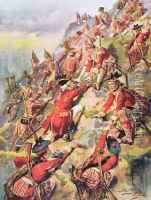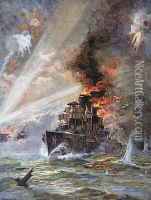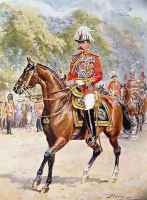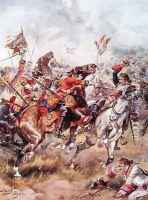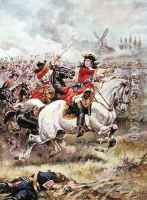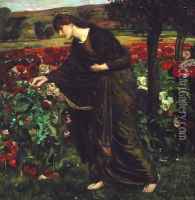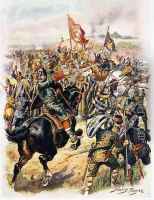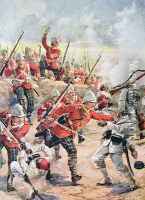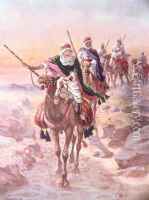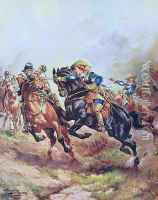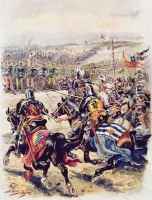Henry A. (Harry) Payne Paintings
Henry Albert Payne, known as Harry Payne, was an English stained glass artist, watercolorist, and illustrator of the late 19th and early 20th centuries. Born on December 14, 1868, in Kings Norton, Birmingham, Payne was a significant figure in the Arts and Crafts Movement, which sought to elevate the status of decorative arts and emphasized craftsmanship and design.
After studying at the Birmingham School of Art, Payne became a prominent member of the Birmingham Group, a community of artists who shared the ideals of the Arts and Crafts Movement. He was particularly known for his work in stained glass, which is characterized by its vivid colors and intricate designs. Payne’s stained glass pieces often featured historical and allegorical scenes, and they can be found in many churches and buildings throughout the United Kingdom.
Apart from stained glass, Payne was also an accomplished watercolorist. His watercolor paintings frequently depicted landscapes and rural scenes, capturing the serene beauty of the English countryside. He was adept at illustrating books as well and contributed to several publications during his career.
During World War I, Payne served in the Artists' Rifles, a regiment that included many figures from the art world. After the war, he continued his artistic pursuits and remained active in the art community until his death on October 5, 1940. Harry Payne’s legacy lives on through his contributions to the Arts and Crafts Movement and his numerous works of art that still adorn many public and private collections.
